Cincinnatus Shryock was an American architect. A number of his works are listed on the U.S. National Register of Historic Places.

The Minneapolis Armory is an 8,400-person capacity music and events venue located at 500 South 6th St. in Downtown Minneapolis, Minnesota, United States. The Armory was built for the Minnesota National Guard in 1935–36 and also used by the Minneapolis Lakers of the NBA from 1947-1960. It was listed on the National Register of Historic Places in 1985.

Reuben Harrison Hunt, also known as R. H. Hunt, was an American architect who spent most of his life in Chattanooga, Tennessee. He is considered to have been one of the city's most significant early architects. He also designed major public building projects in other states. He was a principal of the R.H. Hunt and Co. firm.
Henry O. Jaastad (1872–1965) was an influential Tucson, Arizona architect. His firm created over 500 buildings and Jaastad was Mayor of Tucson for 14 years. A number of his works are listed on the U.S. National Register of Historic Places for their architecture.

Hartwell and Richardson was a Boston, Massachusetts architectural firm established in 1881, by Henry Walker Hartwell (1833–1919) and William Cummings Richardson (1854–1935). The firm contributed significantly to the current building stock and architecture of the greater Boston area. Many of its buildings are listed on the National Register of Historic Places.
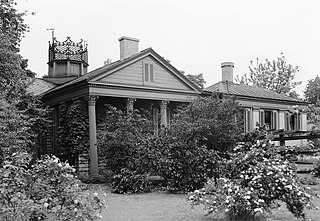
John McMurtry was a 19th-century American builder and architect who worked in Lexington, Kentucky designing a number of notable buildings, several of which are listed on the National Register of Historic Places.

Patton & Miller was an architectural firm of Chicago, Illinois.
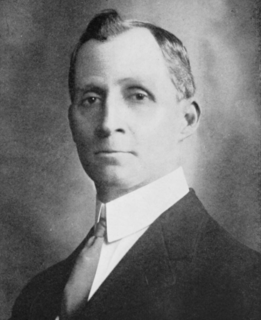
Brinton Beauregard Davis was an architect in Kentucky. More than a dozen of his works are listed on the National Register of Historic Places.

Joseph & Joseph is an architectural firm founded in 1908 in Louisville, Kentucky. The main services include architectural, engineering and design projects.
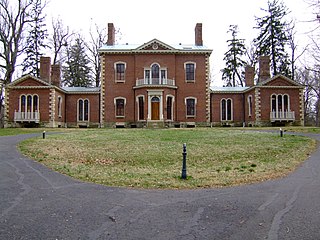
Thomas Lewinski was an architect in Kentucky, United States. Born in England, he immigrated to the United States. For his work at Allenhurst and elsewhere, Lewinski was known in his day as one of the leading architects of the Greek Revival style. He designed many architecturally significant buildings that survive and are listed on the United States National Register of Historic Places.
McDonald Brothers founded in 1878 was a Louisville-based firm of architects of courthouses and other public buildings. It was a partnership of brothers Kenneth McDonald, Harry McDonald, and Donald McDonald.
Helfensteller, Hirsch & Watson was an early twentieth-century American architectural firm from St. Louis, Missouri. It succeeded Hirsch and Helfensteller which had been founded in 1903. The firm's partners included Ernest Helfensteller, William Albert Hirsch and Jesse N. Watson. The firm quickly gained prominence with its 1912 design of the Moolah Temple in St. Louis.
Luckett & Farley is an architecture, engineering, and interior design firm based in Louisville, Kentucky. It was founded in 1853, making it the oldest continually operating architecture firm in the United States that is not a wholly owned subsidiary. The firm began under the name Rogers, Whitestone & Co., Architects, changing its name to Henry Whitestone in 1857, to D.X. Murphy & Brother in 1890, and to Luckett & Farley in 1962. The company is 100% employee-owned as of January 1, 2012 and concentrates on automotive, industrial, federal government, higher education, health and wellness, and corporate/commercial markets. There are more LEED professionals at Luckett & Farley than any other company in Kentucky with 50, as of December 2012.
Thomas H. Atherton, was an American architect. A Princeton University alumni; he also studied at the Massachusetts Institute of Technology. He designed many public buildings in New York and Pennsylvania and a war memorial in France.

Richards, McCarty & Bulford was an American architectural firm. The General Services Administration has called the firm the "preeminent" architectural firm of the city of Columbus, Ohio. A number of the firm's works are listed on the National Register of Historic Places.
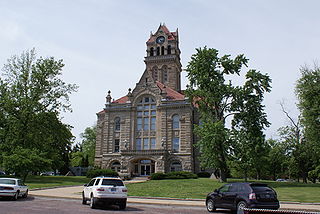
Caldwell & Drake was a construction firm based in Indiana. It included George W. Caldwell and Lester Drake.

John Y. Hill was an American builder, tailor, bricklayer, cattle herder, hotel operator, and state legislator in Kentucky. He was born in Shepherds Town, Virginia in 1799 and moved to Elizabethtown, Hardin County, Kentucky, in approximately 1818. He worked as a tailor from approximately 1818 and into the 1830s. He also worked as a bricklayer and builder from 1825 and into the 1840s. He also served in the Kentucky House of Representatives. In approximately 1825, he built the Hill House, a Federal-style building in Elizabethtown. In the 1840s, he began operating Hill House as a boarding house. Hill died of pneumonia in August 1859. His second wife, Rebecca Davis Stone Hill, continued to operate Hill House until she died in 1882. General George Armstrong Custer lived at the house from 1871 to 1873.
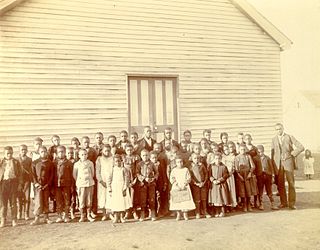
Cadentown School in Lexington, Kentucky was a primary public school for black children in the segregated Fayette County Public Schools from about 1879 to 1922. The building that originally housed Cadentown School, located at 705 Caden Lane, is no longer extant. However, the Rosenwald Fund School is listed on the National Register of Historic Places in Fayette County.
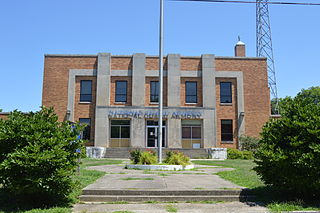
The Elizabethtown Armory, at 205 Warfield St. in Elizabethtown, Kentucky, was built in 1948. It was listed on the National Register of Historic Places in 2002.

The Downtown Commercial District in Lexington, Kentucky, includes 70 contributing properties, some dating from the early 19th century. Most sites are commercial buildings, but the district also features a courthouse, two monuments, a camel sculpture, a drinking fountain, and a clock. Various architectural styles are represented, including Federal, Greek Revival, Italianate, Victorian, Queen Anne, Richardsonian Romanesque, Beaux Arts, and Modern. Architects include Gideon Shryock, Benjamin Henry Latrobe, H.L. Rowe, Frankel & Curtis, and McKim, Mead & White. Also included within the district are 17 noncontributing properties. The Downtown Commercial District was added to the National Register of Historic Places in 1983.














